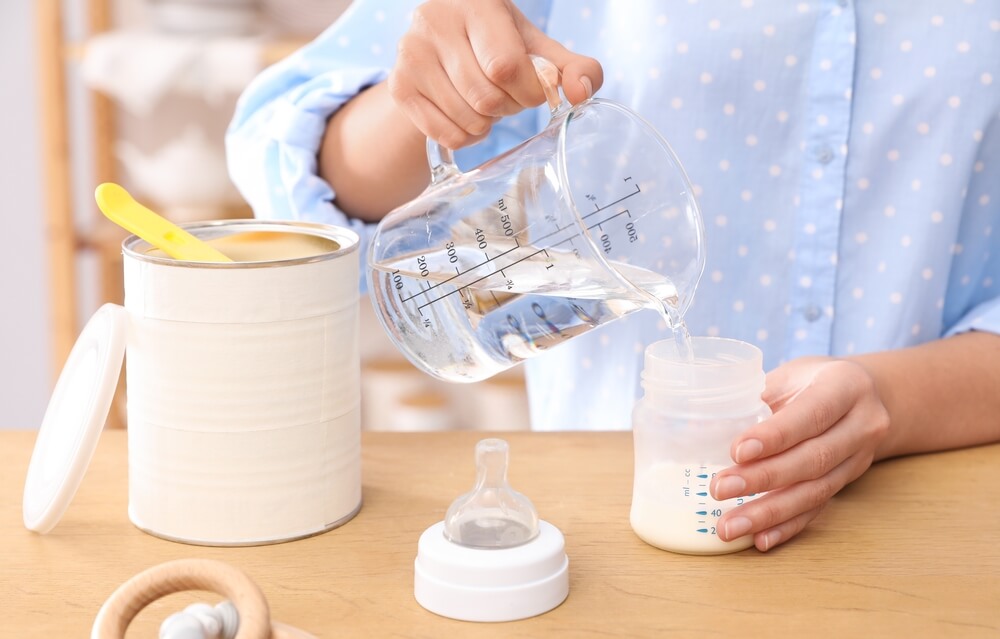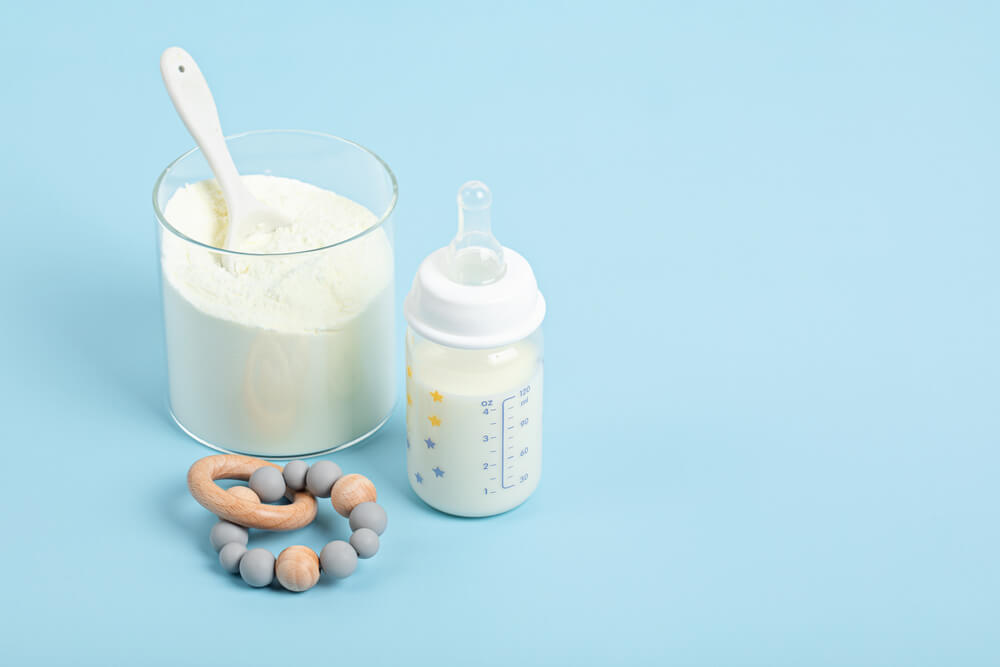Infant formulas have changed a lot in the past few decades. Nowadays, infant formula manufacturers enrich their products with vitamins and various nutrients, catering to every need.
Several formulas cater to specific needs, intolerances, and even allergies. To that end, the experts at My OBGYN Specialists know that choosing the right formula can be overwhelming for parents.
As such, in this blog article, we’ll discuss everything you need to know about infant formulas, talk about the baby formula vs. breast milk question, and more.
What is Baby Formula?
These products can be simply described as special dietary products that simulate breast milk, explicitly intended for infants. These foods can either serve as breast milk replacements or may be used alongside them as a supplement. Mainly, they will be available in three different packaging, such as:
- Concentrated liquid: These should be first measured and mixed with safe water according to the instructions provided with the product.
- Powdered: scoops of the formula should be combined with boiled and cooled safe water. Typically, these are the least expensive options.
- Ready-to-use formulas: These infant formulas are the most straightforward. As they don’t require any mixing.

What is Baby Formula Made Of?
Good question: What is baby formula made of? Typically, the contents are brand-based, but still, most of these infant formulas are based on cow’s milk.
Cow Milk-Based Infant Formulas
These are the most common formulas available. They’re made from cow’s milk and have added nutrients to mimic breast milk. It’s an excellent substitute for most babies, but some infants may have allergic reactions to the protein found in the milk, requiring a different type of formula.
Soy-Based Products
Soy-based formulas are beneficial for newborns with peculiar requirements regarding metabolism. However, it’s essential to be aware that some babies who have allergic reactions to cow milk may also have the same issues with soy.
Protein Hydrolysate Infant Formulas
These products are made for infants who can’t tolerate soy-based products and formulas with cow’s milk. These baby formulas have proteins that have undergone partial or extensive hydrolyzation, resulting in smaller-sized protein components than other infant food products. Extensively hydrolyzed options are suitable for babies with protein allergies.
Other Nutrients in Infant Formulas
Typically, ingredients will vary based on brand. Still, the FDA has a determined list of nutrient specifications to ensure that all infant nutritional needs are met.
And often, manufacturers will set their products’ nutrient levels higher than the FDA’s minimum specifications and enrich their formulas with additional ingredients to ensure that their products meet the label claims throughout the product’s shelf-life. As such, formulas may contain nutrients such as the following:
- Minerals such as copper, iodine, magnesium, calcium, selenium, potassium, zinc, sodium, phosphorus, and chloride.
- What vitamins are in baby formulas? Most formulas will contain vitamins B6, A, B12, K, C, D, and E, along with choline, biotin, niacin, inositol, thiamine, riboflavin, and folic acid.
- Nutritional supplements like amino acids, fatty acids, linoleic acid, and probiotics.
- Additional ingredients such as oils (plant-based) and lactose.
Formula VS. Breast Milk: What’s the Difference?
Infant formula serves as a great breast milk substitute, providing essential minerals, nutrients, and vitamins tailored to meet the nutritional requirements of infants. While formula is a great and nutritious option, it should be noted that it cannot perfectly replicate breast milk.
One distinction is that baby formula is ticker and may be a bit harder for babies to digest, often leading to slight changes in bowel movements and gas than breastfed infants.
Moreover, breast milk is more complex, adapting naturally to cater to the evolving needs of the baby. It has several antibodies which offer protection from infections and illnesses, which manufactured formulas do not possess.
Still, in the end, it makes little difference whether you use formula or breast milk or even combine them both. What’s most important is that your baby is cared for, well-fed, and loved.
Why Do Parents Choose Infant Formulas?
The AAP (The American Academy of Pediatrics) states that breast milk is the go-to nutritional option for infants, but that doesn’t mean that breastfeeding will be the best route to take for every mother.
Both from health reasons and personal preferences, there can be a myriad of factors that will influence parents to opt for formulas for their children.
For instance, some parents will opt for formulas because feeding can be easier and more convenient. On the other hand, some mothers may not have a sufficient amount of breast milk and might need to supplement with f formula.
Formula feeding may have its benefits too. Using infant formulas can help other members of the family embrace the experience of bonding during infant feeding, and parents can share the duty of nighttime feeding.
Lastly, formulas take longer to digest, meaning babies won’t be eating as frequently.
Choosing the Best Formula
All baby formulas found in pharmacies and grocery stores are approved by the FDA and are safe. Still, it’s crucial to remember that not every brand or combination will work for every infant. As such, it’s essential to research your options and speak to your pediatrician about choosing the right formula.
Most babies won’t have any problems with tolerating (cow’s) milk-based formulas, but those children who can’t tolerate the protein in cow’s milk might benefit from hydrolyzed options.
On that note, it’s always smart to contact your baby’s pediatrician to discuss formula intolerances, make sure that there are o underlying medical problems, and discuss other available formula options.
Using Baby Formulas Safely

When opting for formula feeding, there are essential safety guidelines to remember. Firstly, note that most formulas are best to use within a year. Using a formula past its expiration date is strongly discouraged as the nutritional content may degrade over time.
Ensuring the safety of the water used in formula preparation is of utmost importance. It’s recommended to use cold water that has been boiled and then allowed to cool for working with powder and concentrated infant formula.
When warming the formula, take care not to overheat it. Simply place the bottle in a bowl of warm water and let it stand for a few minutes. Before feeding, check the temperature on the back of your hand or wrist to ensure it’s safe for your baby.
Always follow the manufacturer’s instructions to achieve the correct formula mixture, avoiding both excessive dilution and concentration.
For safety reasons, avoid making your own formula or using non-infant-safe options like plain cow’s milk or soy milk.
Experts suggest transitioning your baby to full-fat dairy milk around 12 months of age. When it’s time to wean your baby off formula, consult your healthcare provider for guidance and advice.
If You Need Help
Parenthood preparations can be overwhelming, but you don’t have to do it alone. If you have any concerns related to pregnancy or postnatal care, don’t hesitate to reach out to our compassionate team for assistance. We understand the challenges you may face, and we’re here to support you throughout this journey.


